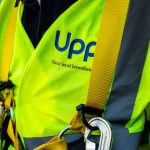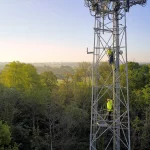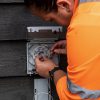Vodafone UK and Nokia Trial L4S on FTTP Broadband to Reduce Latency

Mobile operator and UK ISP Vodafone have teamed up with Nokia Bell Labs to conduct a “world’s first trial” of the “viability” of harnessing L4S (Low Latency, Low Loss, and Scalable Throughput) technology over passive optical networks (PON), which could “greatly improve” network latency times for internet activities like AR, video conferencing and multiplayer gaming, even during peak hours.
For those who don’t know. Latency is a measure of the time that it takes for a packet of data to travel from your computer to a remote server and then back again (ping). The delay is measured in milliseconds (e.g. 1000ms = 1 second) and modern broadband connections will often have an average latency of anything from around c.4ms to 40ms (what is normal for your connection will depend on lots of different factors – see below).
A faster score (shortest time) is always best for latency, although the times can be affected by various things, such as the performance of remote internet servers, the connection technology being used, network congestion at your ISP, peering / routing problems and the setup of your own home network etc. But generally speaking, consumers with PON based Fibre-to-the-Premises (FTTP) broadband connections can usually already expect some of the best latency times of c.2-10ms.
Advertisement
However, there’s always room for improvement, which is where the new IETF Internet standard, L4S, comes in as it could enable networks to simultaneously maintain high throughput and low latency. L4S is based on the knowledge that the root cause of queuing delay (i.e. when packets wait idly in buffers across the network, for instance in routers and modems, before being forwarded) is in the capacity-seeking congestion controllers of senders, not in the queue itself. L4S thus aims to transition away from congestion control algorithms that cause substantial queuing delay and instead adopt a new class of congestion controls, which seek capacity with very little queuing.
Nokia Bell Labs and Vodafone’s Fixed Access Center of Excellence recently performed the “world’s first demonstration” of L4S running over PON in Vodafone’s lab in Newbury, England. The demonstration was performed on an end-to-end fixed access network built with Nokia technology. It consisted of a broadband network gateway (BNG), a PON optical line terminal (OLT), multiple PON optical network terminals (ONTs) and WiFi access points.
The lab tests showed extremely low and consistent end-to-end latencies when travelling across every element of the network and without compromising network speeds. In the tests, Vodafone and Nokia Bell Labs measured consistent latencies of 1.05ms at local Ethernet ports running over a fully congested access network (BNG to ONT) when loading a website, and just 12.1ms when including a fully congested WiFi link as the final connection. The fact it was “fully congested” is a key point, since otherwise 12.1ms on FTTP and WiFi (if we assume it was Wi-Fi 6E or 7 kit) might not seem all that special.
Azimeh Sefidcon, Head of Network Systems and Security Research, Bell Labs at Nokia, said:
“These highly encouraging results show L4S will unshackle any real-time application that would normally be constrained by high latency. Videoconferencing, cloud-gaming, augmented reality and even the remote operations of drones would run flawlessly across the internet, without experiencing any significant queuing delays.”
Gavin Young, Head of Fixed Access Centre of Excellence at Vodafone, said:
“As a leading broadband provider, Vodafone aims to give customers a faster, more responsive, and reliable service unhindered by lag even during peak hours. L4S is an exciting technology with huge potential to achieve this goal, as well as deliver a more interactive and tactile internet experience for our customers.”
The announcement does make a point of referencing online video games, although it is worth remembering that the related netcode for such games is typically designed to work across multiple different types of connection, including significantly slower links. As such, there is often an element of diminishing returns, where past a certain point you won’t notice any particular difference (e.g. if you already have FTTP with extremely fast latency times then L4S isn’t necessarily going to have a very noticeable impact, unless your network is under a lot of strain).
Advertisement
Mark is a professional technology writer, IT consultant and computer engineer from Dorset (England), he also founded ISPreview in 1999 and enjoys analysing the latest telecoms and broadband developments. Find me on X (Twitter), Mastodon, Facebook, BlueSky, Threads.net and Linkedin.
« ONS Picks Virgin Media O2 Business to Provide UK Mobility Data






















































Mark can you ask Vodafone, why do they mess with customers and change they BNG’s around which makes latency worse for them???? they need to fix this issue first, as many people on Vodafone report that they been either connected to a BNG far away from them which causes higher latency / they BNG changes later on after been with Vodafone for some time.
The issue I had, I’m in London and Vodafone routed me through a BNG which was outside London which then makes higher latency for me.
Spoke to customer support and nothing can be done as customers get automated to connect to an BNG, no one can manual do it is what I been told.
THIS! Had to cancel my VF contract in the cooling off period because I was routed via Scotland although I live in Yorkshire due to “load balancing”…
Could Mark ask about this? Maybe he’s got press connections at VF… Forums are full of this
Its usually to do with load balancing so as to avoid gateways becoming congested. For although latency may increase it is usually somewhat negligable as anything less that 30ms in tyical usage scenarios isn’t noticeable to the end user.
Of course I’m sure you can think of situations where it is noticeable, however most EUs won’t be able to tell the difference.
Though I should imagine were they to implement this it would be difficult to achieve across the entire network E2E as it would require Openreach et al to sign up to it.
Sure… That explains why VF does it… But the load balancing appears to be completely random… People down south are routed via Scotland and vice versa…
In online gaming I totally noticed the unnecessary extra 10ms that can be the difference between playable and playable with a worse experience
Exactly this. I’m on Vodafone Pro II 900mb via CityFibre and I’m routed through their London BNG which results in an average ping of 20-40ms which for a Premium FTTP product (£61 a month!) from a huge corporation with the resources and the infrastructure of Vodafone, is a joke.
Other, smaller FTTP ISPs can easily provide a better connection with much lower and expected pings.
Where in the country are you AJ and what are you pinging? 20-40 seems high. London should be fine: most smaller ISPs only have equipment there.
@XGS – I’m in Glasgow South and mostly always routed through the London BNG and have never been routed through the closest BNG in Edinburgh. All speed tests are conducted using Ethernet and a new iPhone 15 Pro max which connects using the hub’s 6E frequency. The only respite from high pings comes from the occasional routing through the Manchester BNG which produces a consistent ping of 10-11ms.
XGS
If I’ve done my sums right and you ran a fibre from Lands End to John O’Groats that should only only result in a round journey of about 14ms. Surely therefore it shouldn’t make that big a difference where the BNG is located?
Speed of light in fibre is about 66% of light speed, Dave. Vodafone’s network isn’t going to be a straight line or even close to it to anywhere so we’ve no idea how it’s getting from Glasgow to London.
However I’m still not sure what the ping talked about there is actually to. The 10-11ms sounds like a ping to the BNG or something like Cloudflare DNS where if you’re on a Manchester BNG you’ll hit a Cloudflare server in Manchester, London you’ll hit one in London. It doesn’t actually matter much in regular use as most of what a customer does that’s latency sensitive isn’t anycast like that, it lives in one place, and most of the paths traffic will take to most destinations will end up going through London at some point.
I think this is about how the latency is being measured more than actual experience to be honest. Ping something in London on a London BNG from Scotland the latency should be very close to the latency on a Manchester BNG if not better as the path may be more direct from Glasgow. The issues with the BNGs are far more acute when someone down south is sent to Manchester or Scotland’s BNGs.
Pinging something in Glasgow or Edinburgh when going via London BNGs won’t be a delight however going by the earlier comment I suspect this refers to the ping reported by speedtest.net. Hardly any of a customer’s actual traffic is going to take that path: most of it will be GlasgowLondonSomewhere else regardless of BNG with the only difference being how it gets to London.
@That Doggy in the Window
Not necessarily – they could have it as a CF exclusive
As long as there are no bottlenecks between BNG and Openreach OLT, which there shouldn’t be, Openreach don’t need to be involved in this at all.
The BNG should be the bottleneck in one direction, it isn’t supposed to send more data to the Openreach network than the user is provisioned for, the router can bottleneck the other.
Of course does mean if you use another router you’re out of luck with this but they could work this way if they wanted to.
Whenever I go to the centre of London, it becomes a torture to access the internet from my 4G supported phone, they should find a solution for this first.
I don’t think the folks doing these tests are involved in the mobile network’s capacity in London.
Although saying that I don’t think this is ever going to see the light of day in the UK either: Vodafone have FTTP networks elsewhere in the world they own end to end, they don’t here.
Any new updates about the Vodafone Red Stream for 2024 the last update was autumn 2023